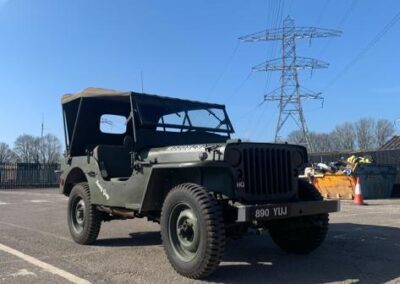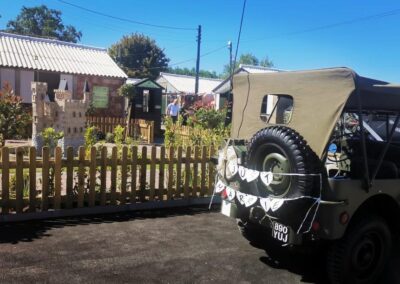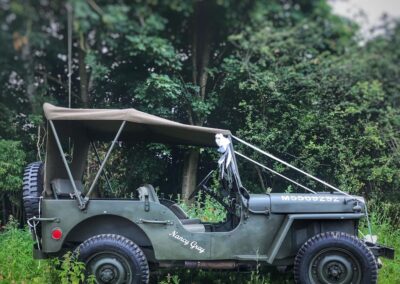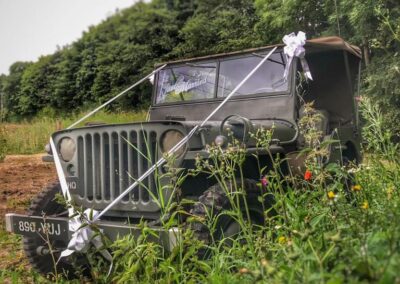WILLY'S JEEP - NANCY GREY & BILLY BOY
Their History…
The Jeep legend began in November 1940, in the early days of World War II, just a year before the United States entered the war. A small, four-wheel drive prototype, the Willys “Quad”, was delivered to the US Army. It featured the Willys “Go-Devil” engine, developed by Delmar “Barney” Roos. With 60 horsepower and 105 foot-pounds of torque it not only exceeded the Army’s requirement but dwarfed the Bantam’s 83 and Ford’s 85 pound-feet of torque, it’s only competitors for the military contract. The Quad was the father of the MB, CJ series, and Wrangler. Willys refined the Quad and built 1,500 units of the Willys MA model, many of which were used in WWII.
From 1941 to 1945 Willys produced the MB model, the original go-anywhere, do-anything vehicle, which came to be known by its nickname, “Jeep”. Made famous during WWII, Willys produced over 300,000 MB vehicles. Jeeps were heavily used by every division of the American military, with 144 Jeeps provided to every infantry regiment in the U.S. Army. Large numbers of Jeeps were shipped to the Allied Forces of Britain and Russia: nearly 30% of total Jeep production.
“Billy Boy”, the SAS Jeep that took up residency at Eden Camp Modern History Museum has been offered as part of our display from Simon Tavener who kindly volunteers his time to maintain and assist in the Camp’s Motor Pool. This particular Ford model was manufactured in 1943, serving in the British Army until the late 50s, with a 2.2 Go-Devil engine; a 134 cubic inch in line 4-cylinder flat head engine that was originally developed with the Willys-Overland Whippet in 1926. It is a rare piece of military history as Billy was part of the USA’s Lend Lease Agreement, given over to the British forces circa 1943/44 the British adapted the vehicle to suit Airborne use.The process involved stripping the Jeep of its hood, windscreens and body furniture. The modifications resulted in a narrower, shorter, more agile vehicle with only the essentials left, including a spare wheel and tools placed at the front and a Bren Gun attached to the side. It was used frequently for military transport, being so widely used that there was a rumour amongst the German Army that it was standard issue for the GI soldier!
Here at Eden Camp, “Billy Boy” forms part of our vehicle display, educating our visitors with his story. Occasionally, “Billy Boy” gets taken out for a spin to check he is still in working condition – staff & visitors alike love to hear the engine and experience the nostalgia of the sights and smells which are all part of Eden Camp’s legacy.







